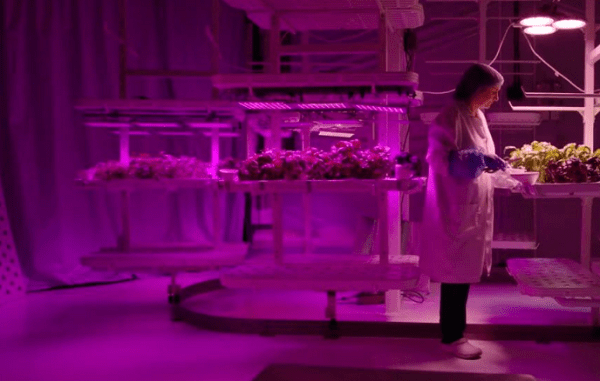
One company is challenging the stacked approach favoured by the early vertical farms. New AG International spoke to GrowPura’s CEO Nick Bateman (image) to learn about the company’s different type of vertical farming design and technology, and followed up with this Q&A.

Q: What are the challenges in making a profitable vertical farm?
A: Vertical farming has very different economics and profile to outdoor farming. The major cost areas are energy (replacing natural light which is free with LEDs and the cost of controlling the environment). Outdoor agriculture has a more expensive harvesting and subsequent processing activities incurring product losses for many reasons, and costly transportation, whereas vertical farming incurs high capital cost for growing.
However, focusing on maximizing tray area per footprint is the way to turn these economics in the favour of vertical farming.
Q: How have companies normally gone about designing a vertical farm and how is your technology different?
A: In the early days of vertical farming, there were many companies that developed their own technology and many that selected a range of elements from partial solution providers. GrowPura took the view that a holistic approach was required with intensive automation. The company started by using personnel with extensive horticultural experience – including some early vertical farming experience – before adding a variety of automation technologies and AI to the business. To achieve this, we collaborate with worldwide partners including, for example, Siemens.
Q: What are the agronomic benefits of taking the GrowPura approach? Are there benefits too when considering contamination considerations?
A: GrowPura has a number of special differences. Continuous movement of the crop including vibration to improve product uniformity. This can be demonstrated to show increased plant stem, making the plants more robust; and secondly on harvest, the plants lose less moisture, aiding shelf life and eating experience.
The second element was to develop a clean room environment for growing, thus avoiding all contamination. The decision to do this happened early in the company life after noticing the level of contamination in greenhouse operations.
Q: What is in the pipeline for GrowPura? What crop areas are you focusing on?
A: The company has a range of solutions, but the premier turnkey solution is a large-scale farm. The company was formed in 2012 and has now had three development sites in order to continuously improve. By making facilities scalable and operating a cost efficient process, it is possible to deliver a wide range of products and make money from lettuces – through baby leaf and microgreens, to fruits, niche food products; and plants which have a range of benefits – from consumer and healthcare products to saplings. The challenge for indoor farming in contributing to solving the adverse impacts of population growth, urbanization and climate change is to develop wider product ranges. The opportunities are immense – the challenge is to grasp the nettle and show how indoor farming can succeed and make that essential contribution.
Q: More generally, what do you think is the trajectory for the vertical farming industry, both in short term and longer term? As a supplementary question, do more companies need to fail for the industry to find the best business model?
A: The interest in vertical farming will grow because of the impacts in different parts of the world of climate change, soil erosion and migration, and not least the workforce moving away from certain activities – harvesting and trucking to name a few. In our business we need to sell the message more strongly, but I suspect there are more companies to fail. And whilst we would like to retrofit technology, this is often a challenge for a company that has invested a lot of money and failed to make the investor returns.
This article was featured in our March/April 2024 issue of New AG International, where the theme of the issue was vertical farming.